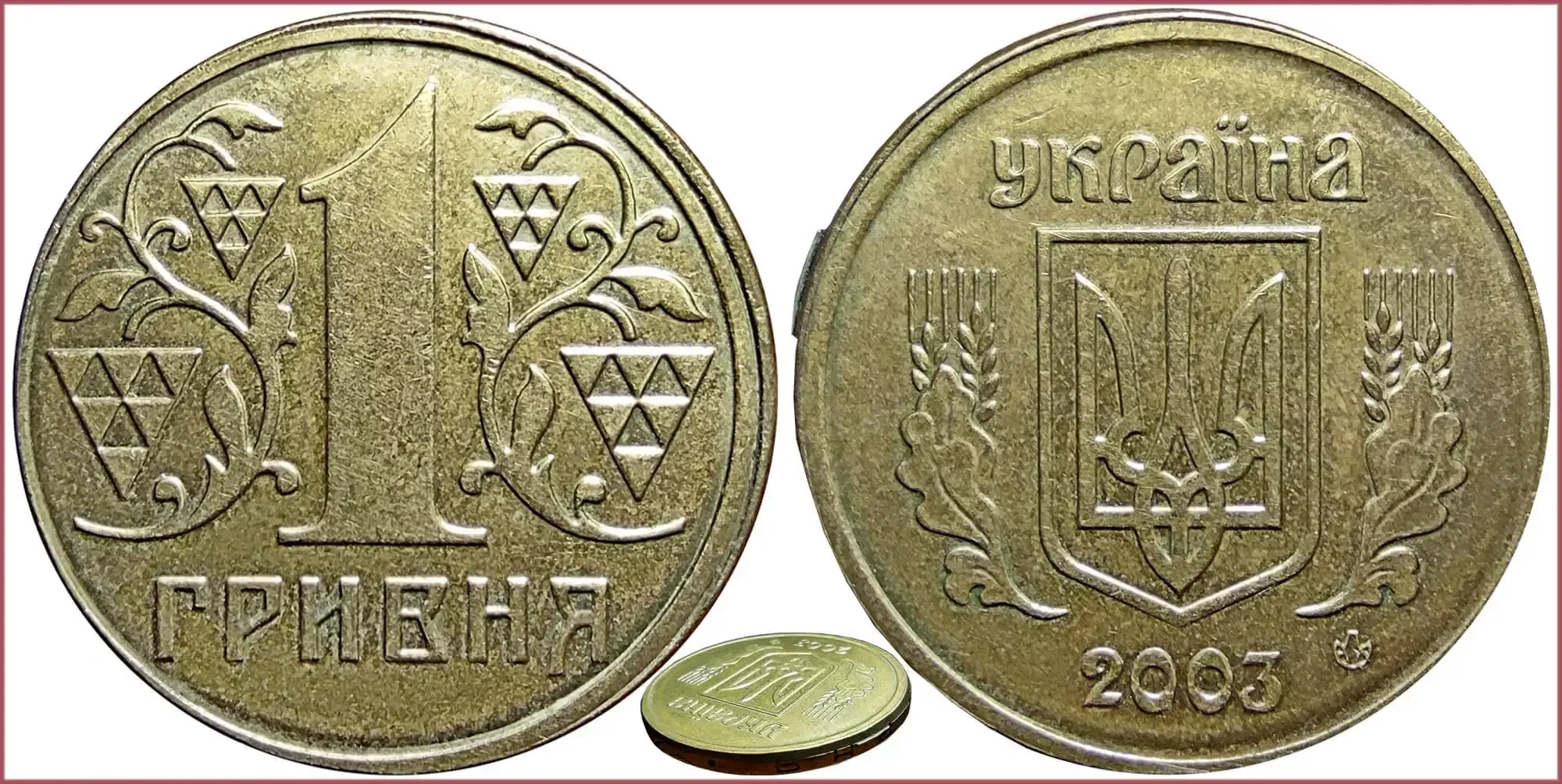ERROR COINS: MINT-MADE ERRORS
Offset Die (Mint-made Error) on Ukrainian coin — 1 hryvnia, 2003: Ukraine
The photo shows a standard Ukrainian circulating coin (1 hryvnia, 2003) with a fairly obvious Mint-made error — the obverse and reverse images are noticeably shifted relative to the center of the coin blank.
This coin was got personally by me from real money circulation. And it's interesting: in addition to the fact that a mistake was made in its manufacture, this defect was also missed by the quality control of the mint.
A rare phenomenon: among thousands of exactly the same coins, I never again managed to find such errors.
Wikipedia mentions a similar phenomenon:
"Dies must be properly aligned in presses for coins to be struck correctly. Errors occur when dies are offset, tilted, or rotated. Offset errors occur when the hammer die is not centered over the anvil die typically resulting in an off-centered obverse, but centered reverse. Tilting errors occur when die surfaces are not parallel producing coins that are thinner along one edge, and sometimes causing missing design elements along the opposite edge because of insufficient pressure being exerted on that edge. Rotation errors occur when the images on the obverse and reverse dies are turned from the normal positions such as when the reverse image is at a right angle to the obverse".
1 ГРИВНЯ: 1 hryvnia.
УКРАЇНА: Ukraine.
- Aluminium-bronze: 26 mm - 6.92 g
- Reference price: 27$
ERROR COINS — WHERE & WHEN (coins catalog: by names & emitents)
- ALMOST ALL STATES OF THE WORLD AND ALL HISTORICAL PERIODS OF COIN ISSUANCE
ERROR COINS as coin name.
In this case, we are talking about the so-called Mint-made errors as a phenomenon in numismatics. This, of course, is not the denomination of the coins, but it is a noteworthy phenomenon.
This type includes those coins that, after production at the mint, accidentally entered circulation with manufacturing defects. The cause of such unintentional errors can be equipment breakdowns, miscalculations by the staff of the mint production line, defective metal blanks...
Wikipedia has an extensive article on Mint-made errors. The types and varieties of such errors are mentioned and described. I will just note a few points here.
First of all, it is worth remembering that the appearance of each such coin in circulation is an unintended, unwanted, random phenomenon. Mints try desperately to avoid this. This is more the exception than the rule.
In ancient times and even several centuries ago, the quality of coins was usually low. For example, the coins of the Russian Empire of the 18th century that are common here in Ukraine very often come across with one or another Mint-made errors (Doubled die, Missing design elements, Strike errors...).
Scientific and technological progress has led to the fact that equipment and production processes are close to perfection. However, they are still not perfect... Mint-made errors still occur in relation to the coins of almost every modern country in the world.
Due to the relative rarity of such coins, they are the object of interest of numismatists. Brightly expressed specimens are highly valued.











